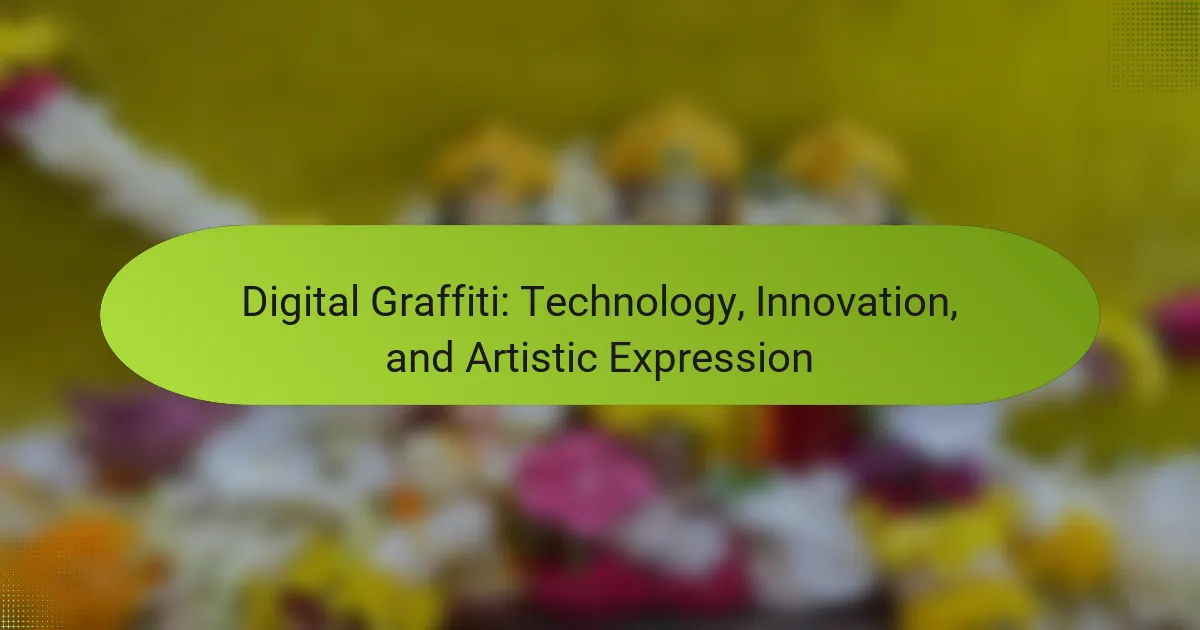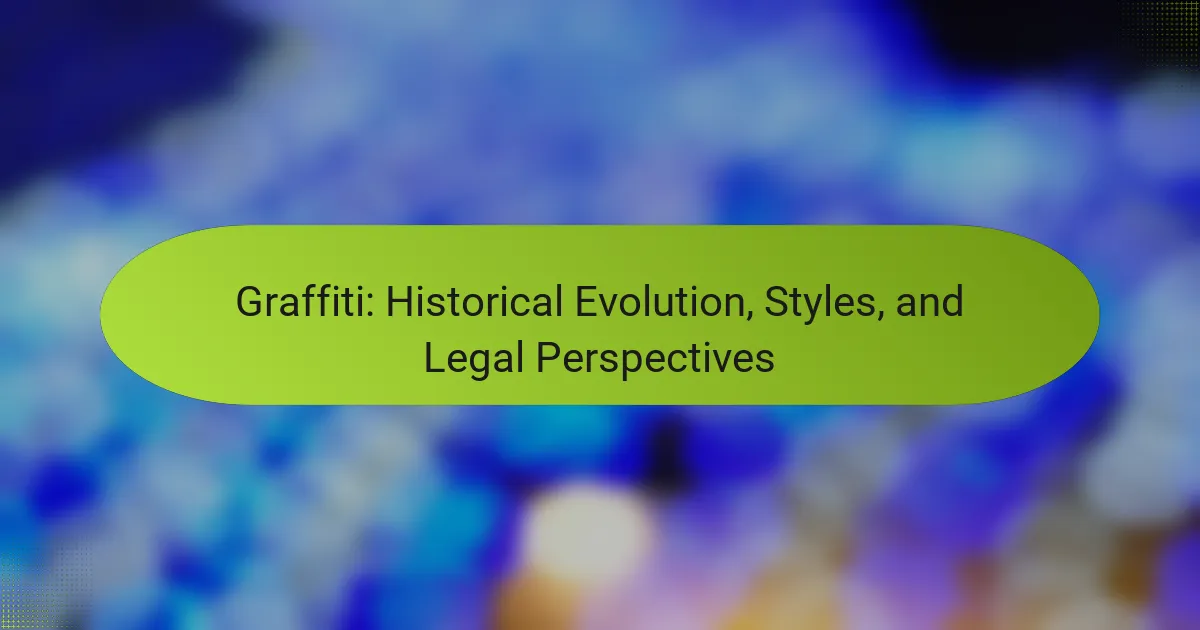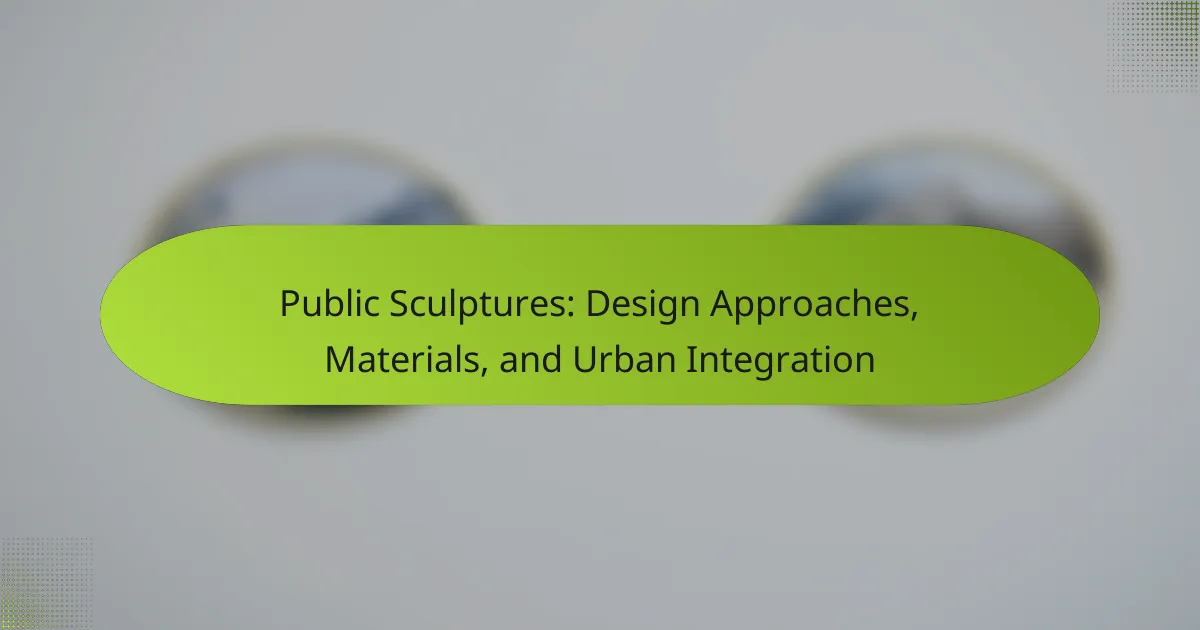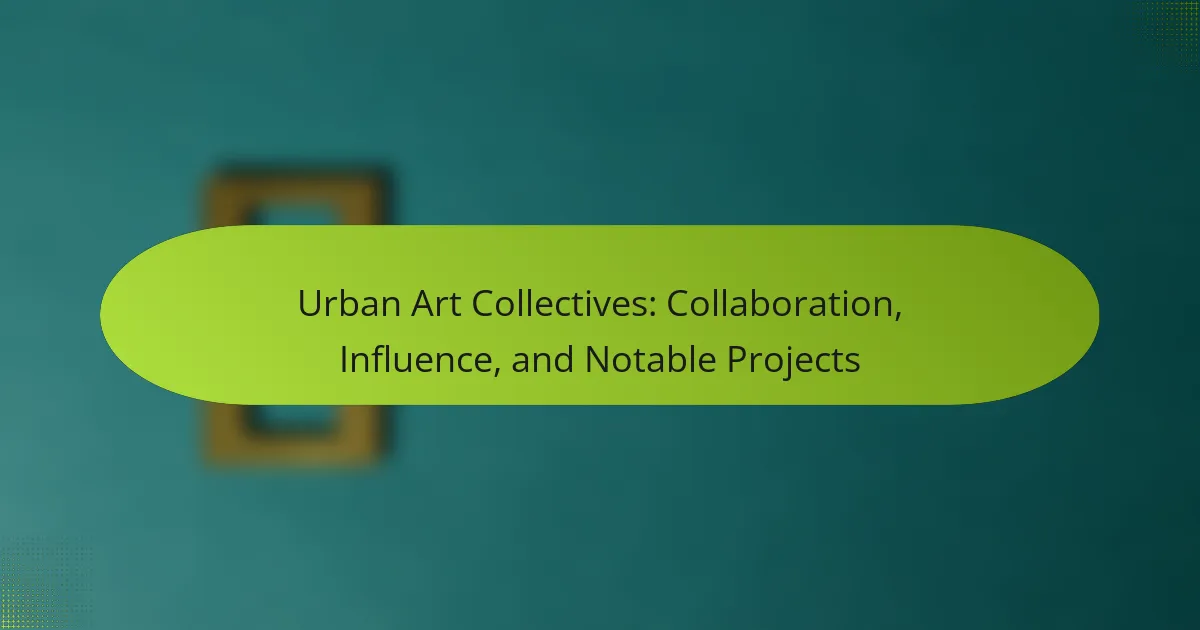Murals in public spaces serve as vital tools for artistic expression and cultural storytelling. They enhance community engagement, reflect local identity, and promote social dialogue. Various techniques like spray painting, stenciling, and mosaic contribute to their unique styles. Additionally, murals play a significant role in urban revitalization and require ongoing preservation efforts to maintain their impact.
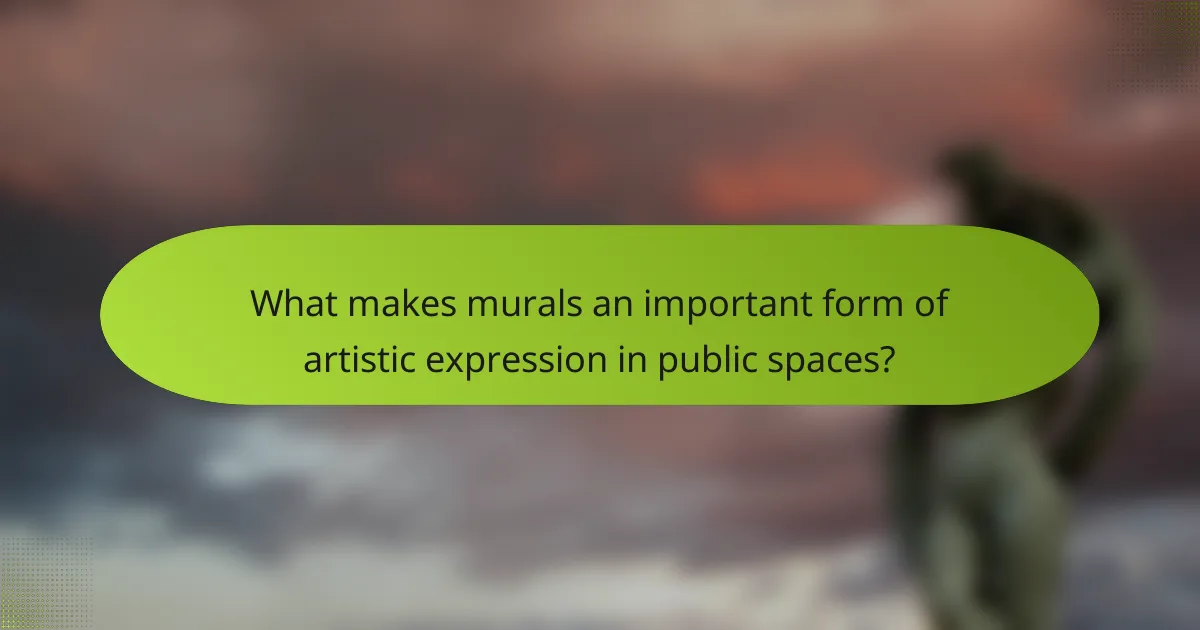
What makes murals an important form of artistic expression in public spaces?
Murals are vital for artistic expression in public spaces due to their ability to convey cultural narratives and foster community engagement. They transform ordinary environments into vibrant canvases, enhancing aesthetic appeal and promoting social dialogue. Murals often reflect local history, identity, and values, making art accessible to everyone. Techniques such as spray painting, mosaic, and stenciling allow artists to create diverse styles and messages, contributing to the uniqueness of each piece. These artworks can inspire change, celebrate diversity, and serve as a platform for underrepresented voices.
How do murals enhance community identity and pride?
Murals enhance community identity and pride by reflecting local culture and history. They serve as visual storytelling tools that foster a sense of belonging. Community involvement in mural creation strengthens connections among residents. Additionally, murals can transform public spaces, making them more inviting and engaging. This artistic expression contributes to a unique local character, distinguishing neighborhoods and promoting pride among residents.
What role do murals play in social and political commentary?
Murals serve as powerful tools for social and political commentary by conveying messages that resonate with communities. They reflect cultural identities and address social issues, often sparking dialogue and awareness. For instance, murals can depict historical events, advocate for human rights, or challenge societal norms. The visual nature of murals allows for immediate impact, making complex themes accessible to a broad audience. Unique in their ability to combine art with activism, murals transform public spaces into platforms for expression and change.
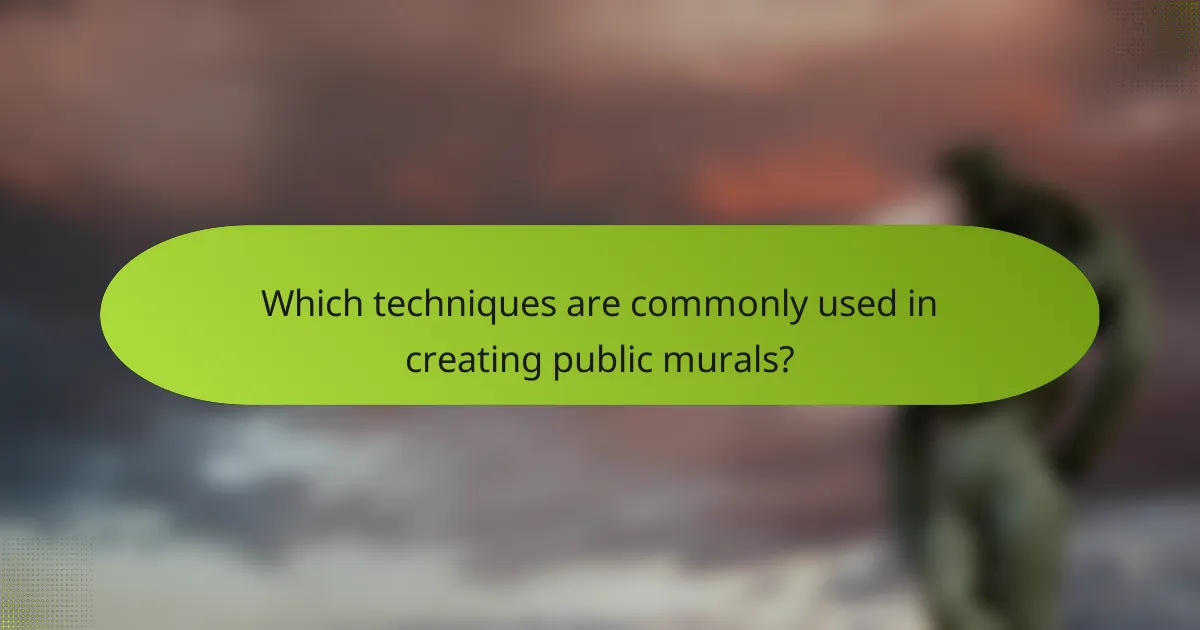
Which techniques are commonly used in creating public murals?
Common techniques for creating public murals include spray painting, brushwork, stenciling, and mosaic. These methods allow artists to express cultural narratives and community stories while enhancing public spaces. Spray painting offers quick application and vibrant colors, while brushwork provides detail and texture. Stenciling enables precise designs, and mosaics use varied materials for a unique visual impact. Each technique contributes to the overall artistic expression and cultural significance of the mural.
How do different paint types affect mural longevity and vibrancy?
Different paint types significantly influence mural longevity and vibrancy. High-quality acrylic paints offer durability and color retention, while traditional oil paints provide rich hues but may fade faster.
For instance, latex paints are water-resistant and easy to clean, enhancing mural maintenance. In contrast, chalk-based paints create a matte finish but may require more frequent touch-ups. The choice of paint affects not only the aesthetic appeal but also the mural’s lifespan, with UV-resistant formulas extending vibrancy against sun exposure.
Ultimately, selecting the appropriate paint type is crucial for preserving the artistic expression and cultural significance of murals in public spaces.
What are the steps involved in the mural creation process?
The mural creation process involves several key steps. First, artists conceptualize the design, considering the cultural significance and intended message. Next, they prepare the surface, ensuring it is clean and primed for paint. Then, they sketch the design onto the wall, followed by applying the base colors. Afterward, artists add details and finalize the mural with protective coatings. Finally, they engage the community through unveiling events to celebrate the artwork’s completion.

How do cultural influences shape mural styles and themes?
Cultural influences significantly shape mural styles and themes through community identity and historical context. Local traditions, social issues, and cultural narratives inspire artists, resulting in diverse expressions. For instance, murals in Latin America often reflect indigenous heritage, while urban areas may showcase contemporary social movements. The interaction between community values and artistic techniques creates unique visual languages that resonate with viewers.
What are the unique characteristics of street art versus traditional murals?
Street art is often characterized by its spontaneous, subversive nature, while traditional murals typically reflect commissioned, planned artworks. Street art frequently employs innovative techniques and materials, aiming for social commentary or political messages. In contrast, traditional murals often focus on cultural storytelling or beautification of public spaces. Unique attributes of street art include its ephemeral quality and accessibility, contrasting with the permanence and formal context of traditional murals.
How do local artists incorporate regional history into their murals?
Local artists incorporate regional history into their murals by depicting significant events and local figures. They use vibrant imagery to reflect cultural heritage and community narratives. This practice fosters a sense of identity and belonging. For example, murals may illustrate historical landmarks or traditional stories, connecting viewers to their local past.
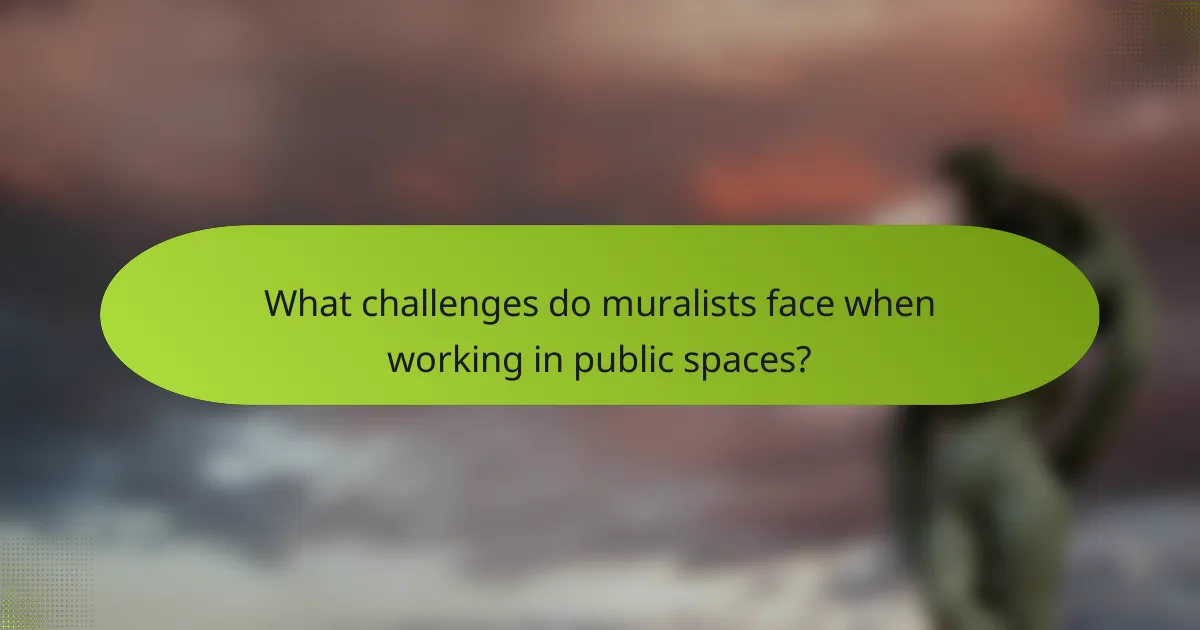
What challenges do muralists face when working in public spaces?
Muralists face several challenges when working in public spaces, including weather conditions, vandalism, and community approval. Weather can affect the quality of paint application and drying times. Vandalism poses a risk to the integrity of the artwork, often requiring additional resources for repairs. Community approval is crucial, as muralists must navigate local regulations and public sentiment. These factors complicate the artistic process and can impact the final outcome of the mural.
How do legal regulations impact mural creation and preservation?
Legal regulations significantly influence mural creation and preservation by establishing guidelines for public art. These laws often dictate where murals can be placed, the necessary permits, and compliance with community standards. For example, some regions require artists to obtain permission from property owners and local authorities, ensuring that murals align with public safety and aesthetic criteria. Additionally, regulations can protect murals from removal or defacement, thus preserving cultural significance. As a result, these legal frameworks shape the artistic landscape, balancing creative expression with community values.
What are common misconceptions about public murals?
Common misconceptions about public murals include the belief that they are merely graffiti, lack artistic value, or only serve decorative purposes. Many assume murals are transient, but many are intentionally created to last for years. Some people think murals are only for urban areas, while they can be found in rural settings too. Additionally, there is a misconception that murals do not engage with the community, when in fact, they often reflect local culture and history, fostering community identity.
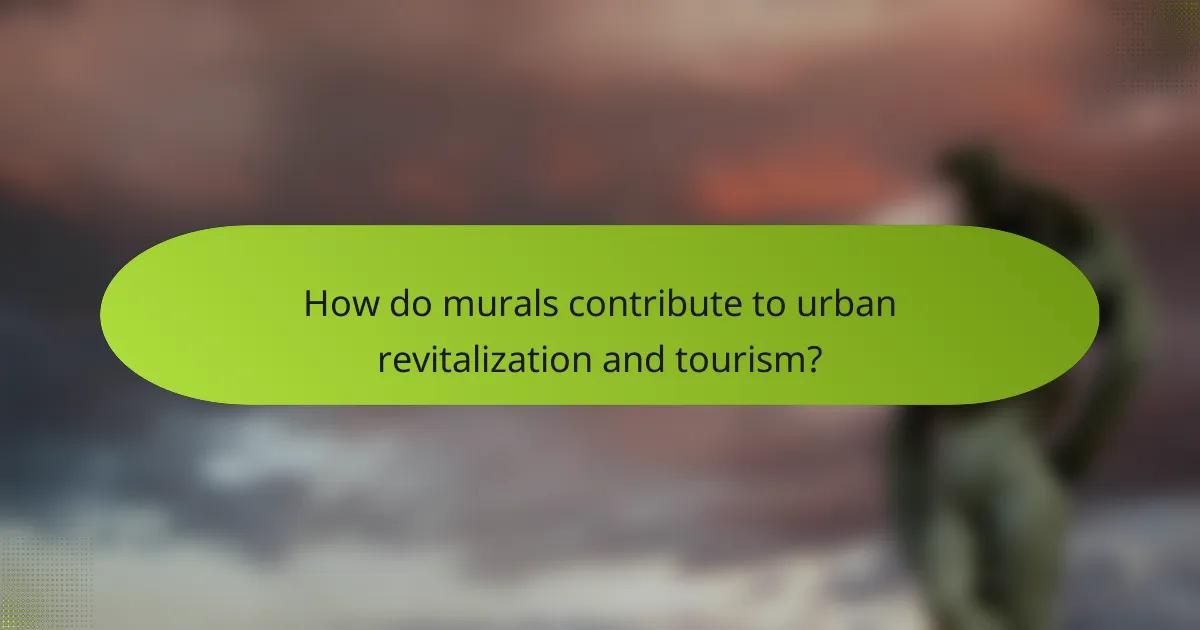
How do murals contribute to urban revitalization and tourism?
Murals significantly enhance urban revitalization and tourism by transforming public spaces into vibrant art galleries. They attract visitors, foster community pride, and promote local culture. Murals can increase foot traffic, leading to economic growth for local businesses. For instance, cities like Philadelphia and Wynwood have seen tourism boost due to their iconic murals. Additionally, murals often reflect unique cultural narratives, making them a rare and valuable asset in urban landscapes. As a result, communities invest in mural projects to create visually appealing environments that celebrate local identity.
What case studies highlight successful mural projects and their impacts?
Several case studies showcase successful mural projects, highlighting their positive impacts on communities. For instance, the “Philadelphia Mural Arts Program” has transformed urban spaces, reducing crime rates by 30% in targeted areas. Another example is the “Chicago Mural Project,” which revitalized neighborhoods and increased tourism by 25%. The “Detroit Murals” initiative improved local pride and engagement, fostering community identity. These projects illustrate how murals can enhance cultural significance and promote social cohesion.
How do murals attract visitors and enhance local economies?
Murals attract visitors and enhance local economies by creating vibrant public spaces that encourage tourism and community engagement. They serve as cultural landmarks, showcasing local artistry and history, which draws foot traffic. As a result, businesses in the vicinity benefit from increased patronage. Studies indicate that areas with murals experience a rise in economic activity, with some reporting a 20% increase in local business revenue. Additionally, murals can foster community pride and identity, leading to further investment in the area.
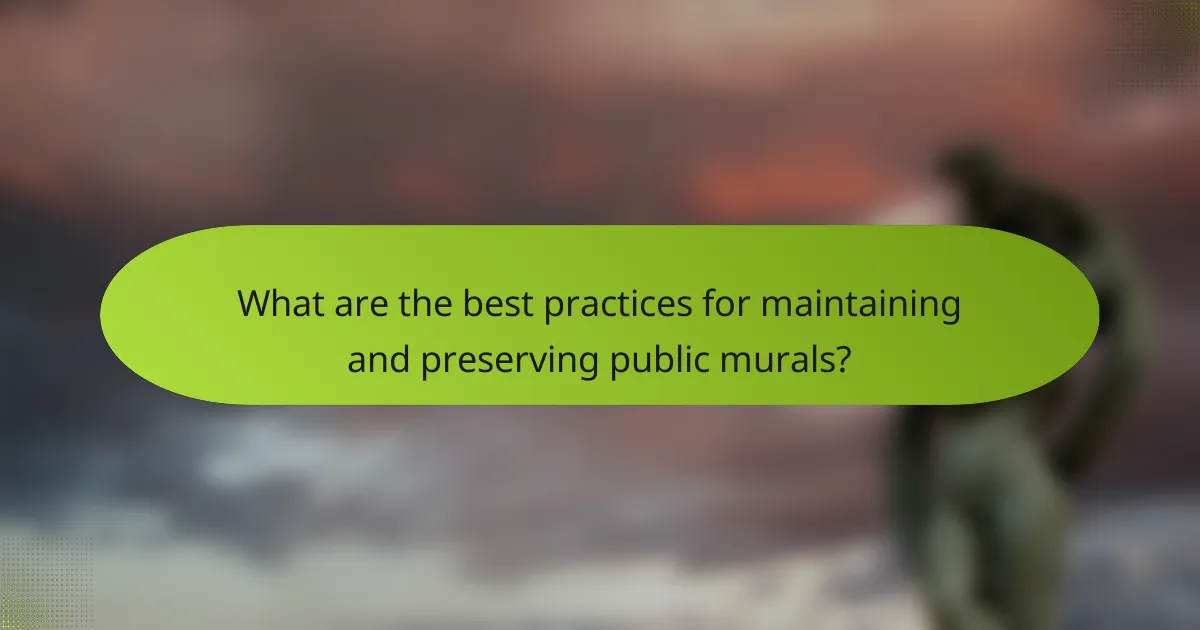
What are the best practices for maintaining and preserving public murals?
To maintain and preserve public murals, regular cleaning, protective coatings, and community engagement are essential.
Cleaning murals periodically removes dirt, grime, and pollutants, which can deteriorate the artwork over time. Using appropriate cleaning materials ensures the integrity of the mural’s surface.
Applying protective coatings can shield murals from UV rays, moisture, and graffiti. These coatings enhance durability and extend the lifespan of the artwork.
Engaging the community fosters a sense of ownership and responsibility towards the mural. Organizing events or workshops can educate the public on preservation techniques and the mural’s cultural significance.
How can communities engage in mural preservation efforts?
Communities can engage in mural preservation efforts through organized initiatives and collaborative actions. Forming local committees can facilitate awareness and promote the importance of murals as cultural heritage. Regular maintenance programs can involve community volunteers to clean and restore murals, ensuring their longevity. Educational workshops can teach residents about the artistic techniques used and the historical context of the murals, fostering a deeper appreciation. Partnerships with local artists can enhance preservation efforts by providing expertise and promoting new works that complement existing murals.
What common mistakes should be avoided in mural maintenance?
To maintain murals effectively, avoid common mistakes such as neglecting surface preparation, using inappropriate materials, skipping regular inspections, and failing to protect against environmental factors. Proper maintenance ensures longevity and preserves artistic integrity. Regular cleaning and timely touch-ups are essential to prevent deterioration.
